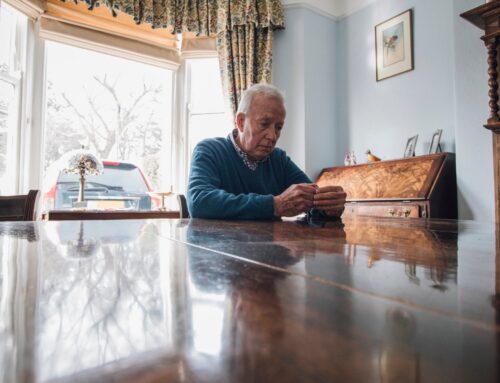(This editorial by Linda Van Eldik was recently published in The Herald-Leader and is reprinted here with permission.)
More than 68,000 Kentuckians are living with Alzheimer’s disease today, and by the time the children born in 2016 start to think about retirement, that number is expected to triple.
The financial toll is staggering: Alzheimer’s will cost us about $226 billion this year and $1 trillion by 2050.
But the disease ravages in other ways too: families scrimp and save for retirement only to spend the last chapter of their lives robbed of memories, ties to loved ones, and dignity. While the bulk of the suffering falls on the patient, their families and caregivers report emotional and physical stress, work-related challenges, loss of employment and financial hardship. In that way, Alzheimer’s is a “family disease.”
While there is no cure yet for this devastating illness, the UK Sanders-Brown Center on Aging is working furiously to change that. And we have already achieved international recognition: the center was a pioneer in the discovery that a healthy lifestyle can help prevent dementia.
We study more than 800 volunteers — both healthy and impaired — to determine how and why AD occurs. We collaborate with researchers around the world, distributing tens of thousands of biospecimens to scientists.
And, perhaps most importantly, researchers at Sanders-Brown discovered that Alzheimer’s disease changes occur in the brain 10-20 years before a patient develops memory problems. This revelation — that there is a window of opportunity to “catch” Alzheimer’s before it does irreversible damage — has affected the direction of AD research worldwide.
We are admired by our peers in the scientific community for our ability to recruit research participants, particularly among minority populations. And we are grateful to the many Kentuckians who volunteer for our research: without their time and effort, we could not have achieved so much.
Our accomplishments were recognized this month by a five-year, $8.2 million grant from the National Institutes of Health; one of 31 centers in the U.S. so honored and one of nine continuously funded since 1985. As the only NIH-designated “Alzheimer’s Disease Center” within 200 miles of Lexington, we are a jewel in Kentucky’s backyard.
The $8.2 million grant sounds like a lot, but AD research is still woefully underfunded. More people die from Alzheimer’s than prostate and breast cancer combined, yet research funding for cancer is 10 times greater. If we could delay the onset of Alzheimer’s by just five years, government spending on the disease would drop by almost half.
A recent outside review of the Sanders-Brown Center on Aging found that it is “one of the very best ADCs, past and present, with robust world-class scholarly productivity and unique resources that they make available to researchers across the globe.”
Here is our promise to Kentucky: we will not waste that momentum.
Sanders-Brown will persevere in its mission to improve the health of the elderly through research dedicated to understanding the aging process, through study of the mechanisms that cause age-related brain diseases, and through outreach/education and clinical programs that promote healthy brain aging.
The cure for Alzheimer’s — arguably one of society’s greatest medical mysteries and challenges — could be five, 10 or 25 years away. No matter when that cure comes, Sanders-Brown will have proudly played a critical role in its discovery.
Linda Van Eldik is director of the University of Kentucky Sanders-Brown Center on Aging.





